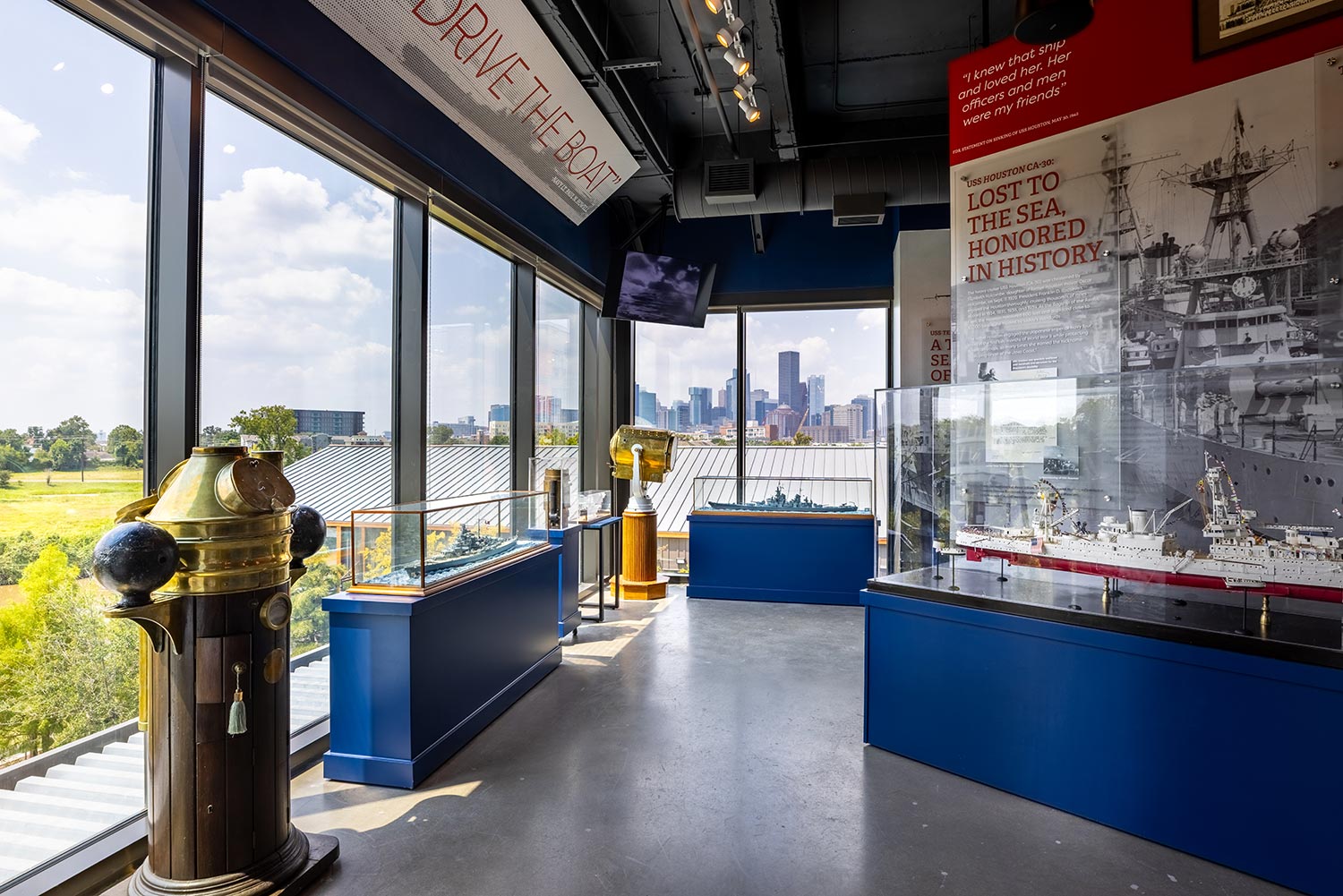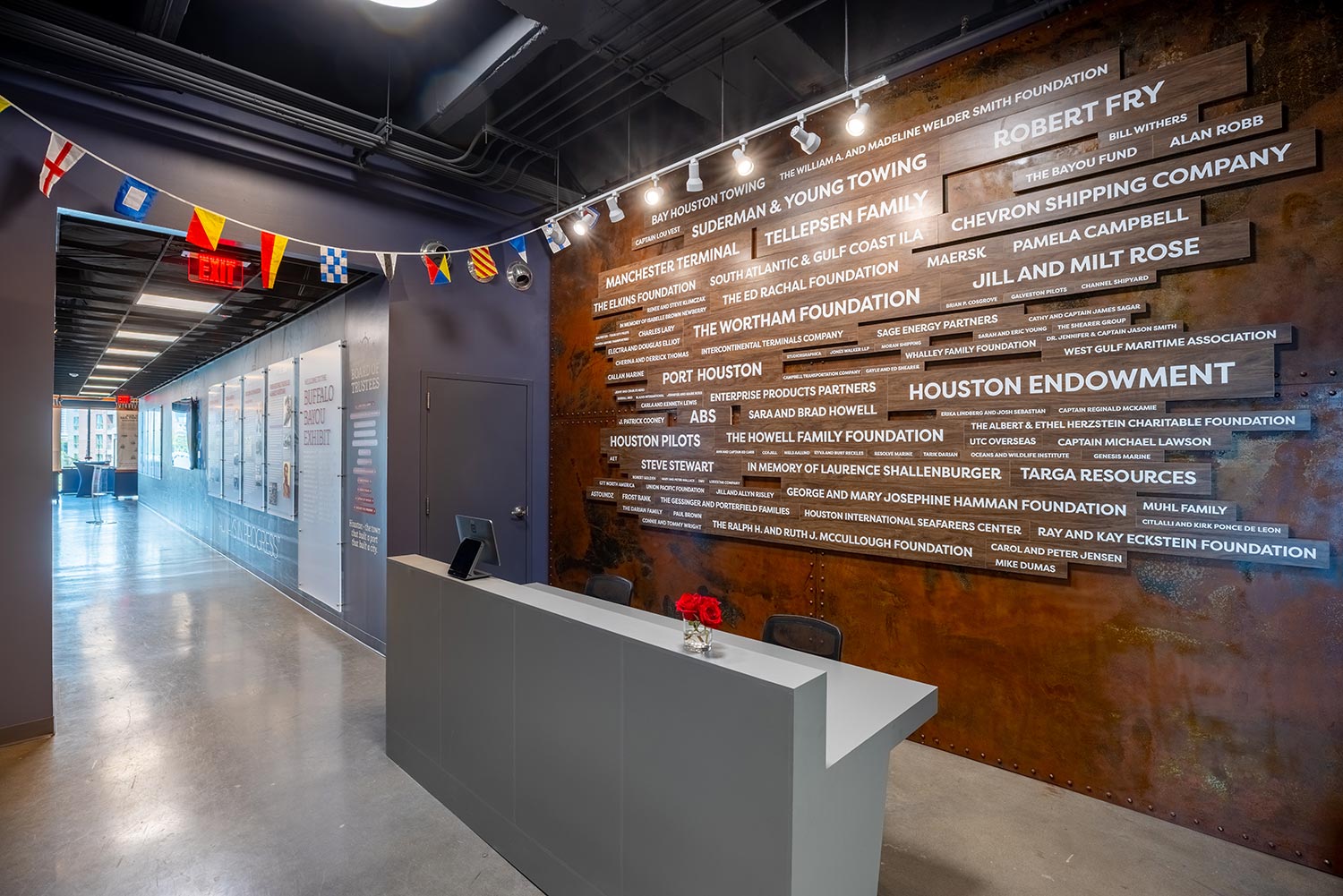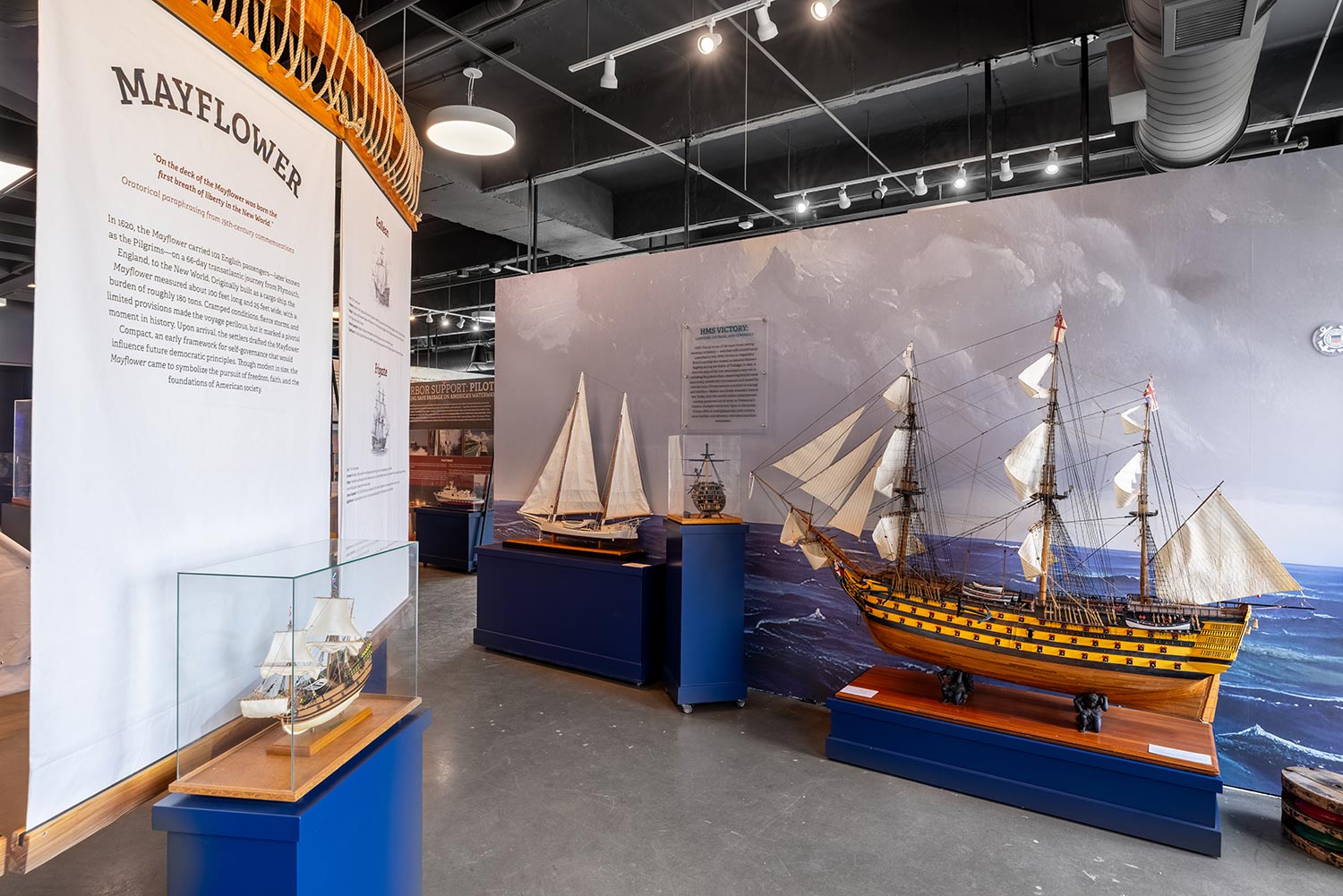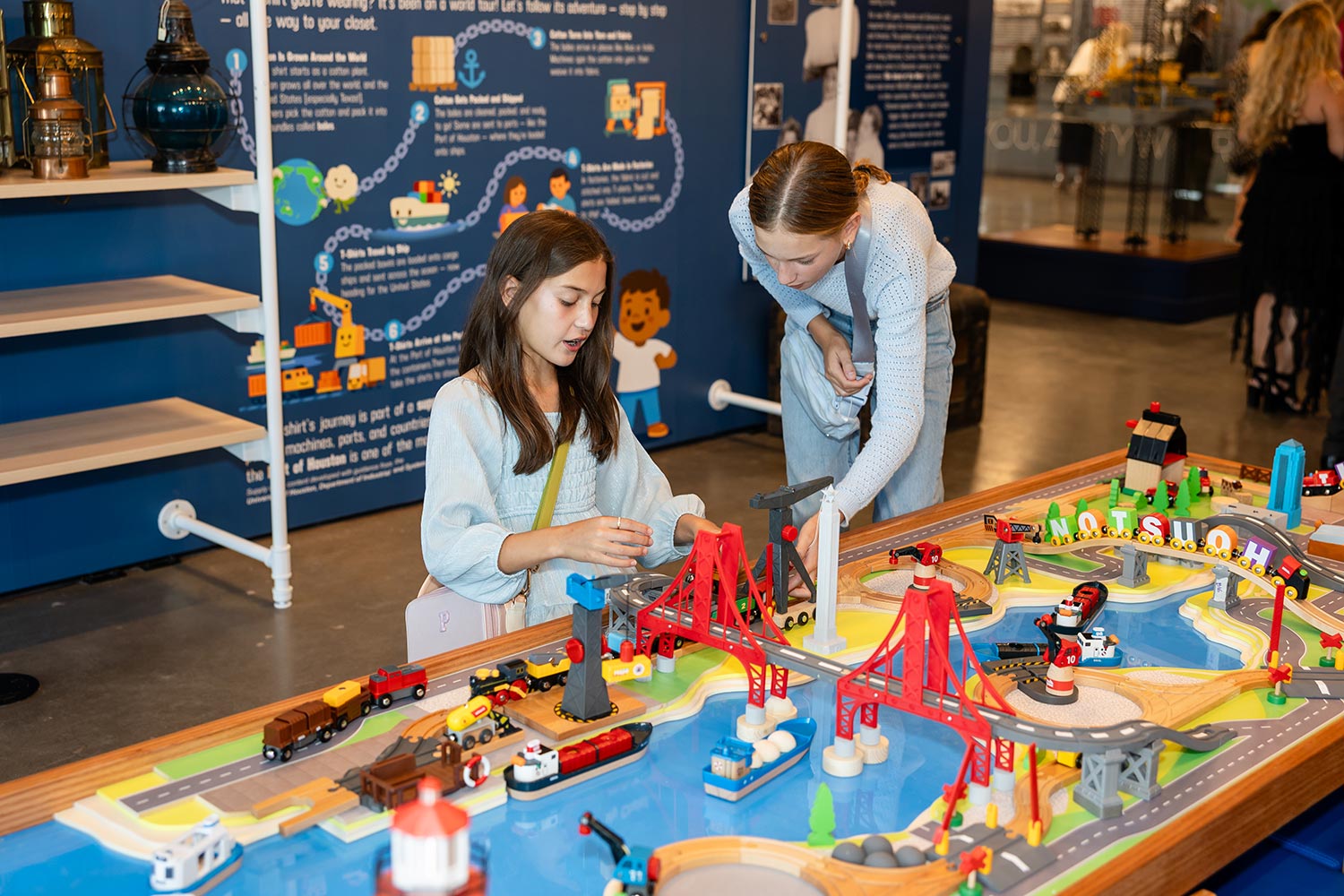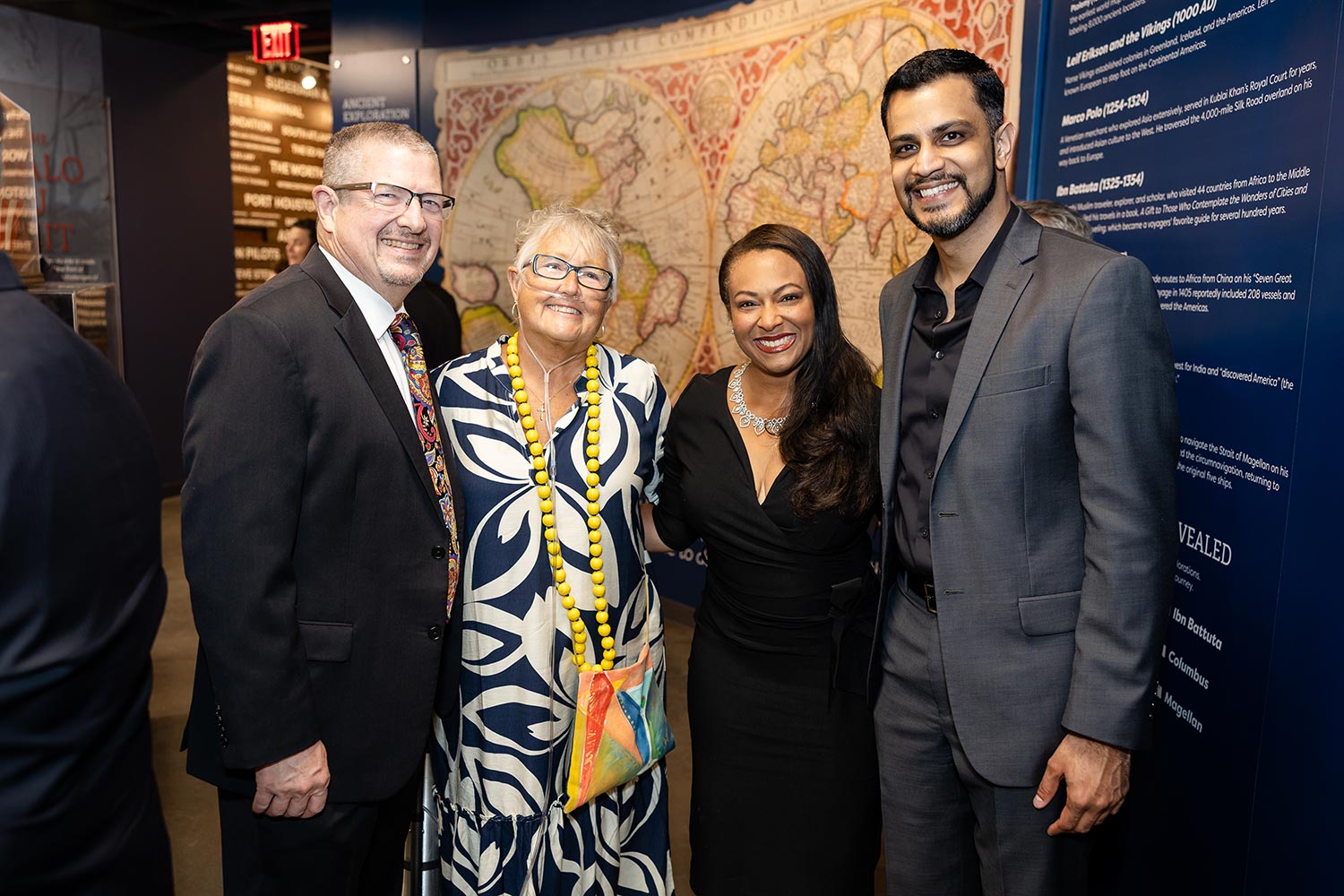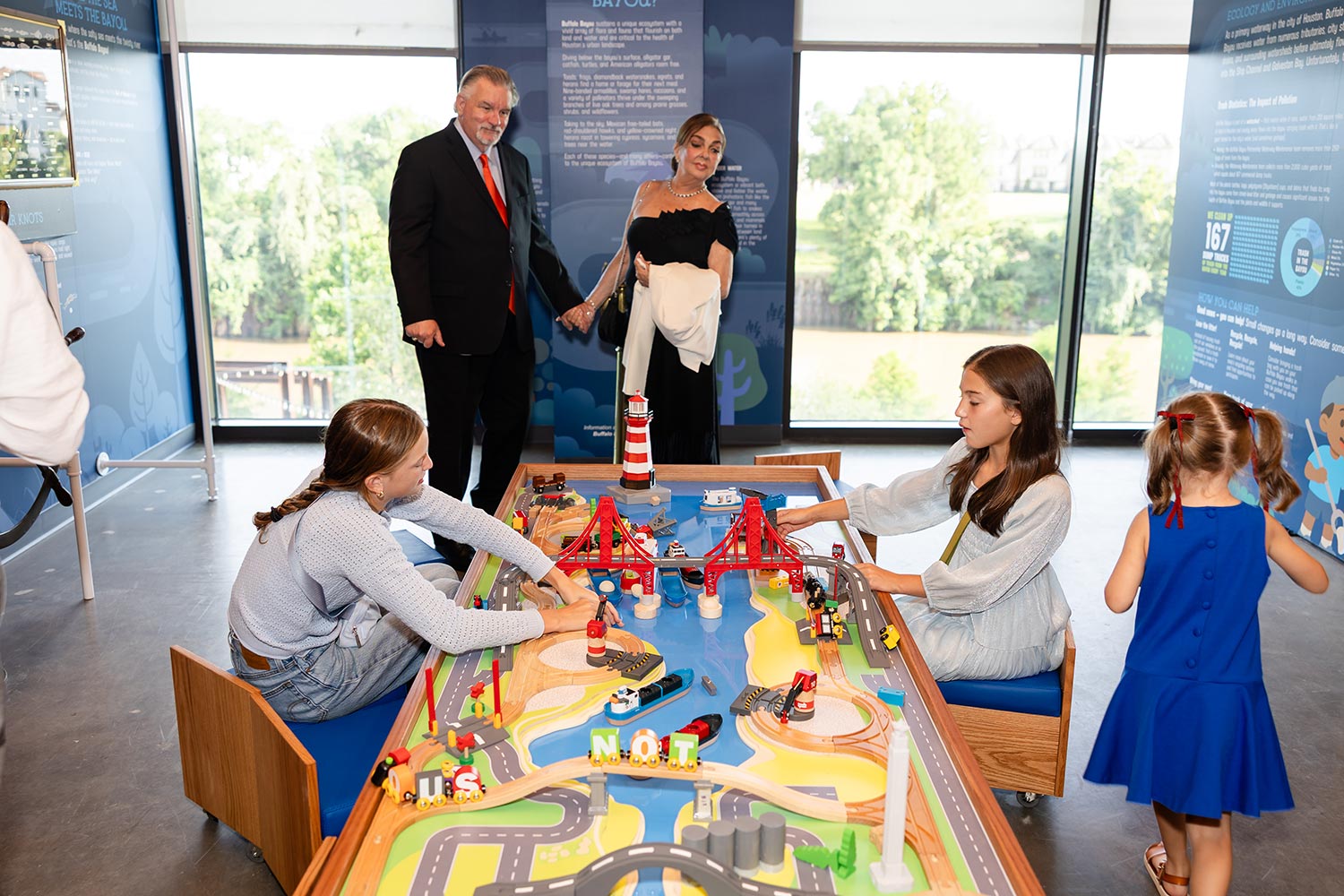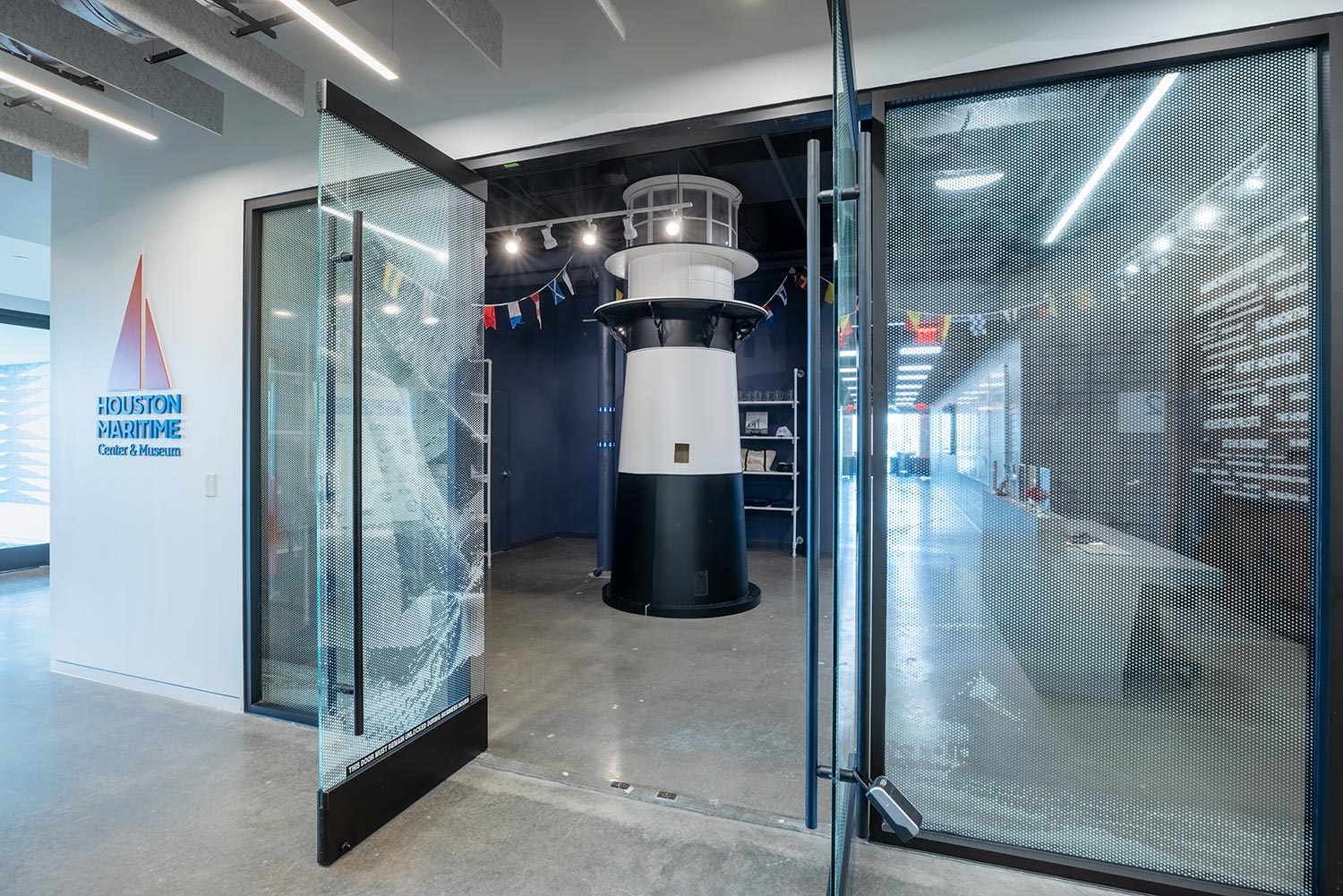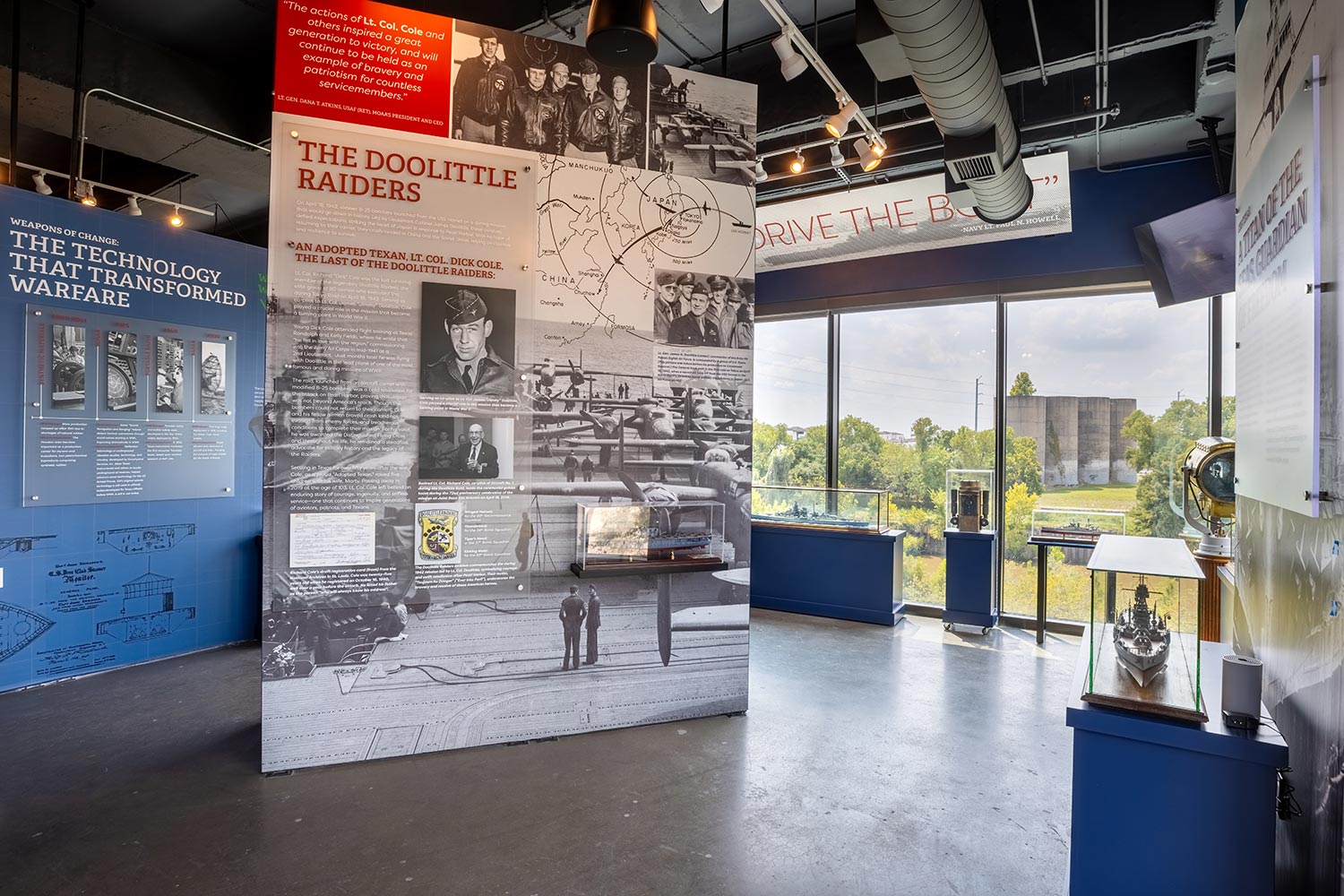MISSION
To navigate Houston’s origin and maritime connection to the world through exhibit, education, and experience.
VISION
A global center for maritime discovery
About the Houston Maritime Center & Museum
Founded in 2000, the Houston Maritime Center & Museum has grown from a small collection of nautical artifacts into a dynamic cultural and educational destination. Originally envisioned by naval architect James “Jim” L. Manzolillo as a place to share the history of sea exploration—particularly Houston and Texas’s role—the museum now serves as a bridge between the public and the maritime industry, past and present. Its exhibits highlight the entrepreneurial spirit that shaped our region and the vital role maritime commerce plays in today’s global economy.
In August 2025, the museum opened a modern new home in the East River Development along Buffalo Bayou, steps from downtown Houston. The prime location enhances accessibility, visibility, and connection to the community. Building on its core pillars – Collection, Education and Connection – the museum offers interactive exhibits, youth programming, industry networking events and community partnerships that bring the maritime world to life. This dynamic storytelling invites visitors of all ages and backgrounds to discover how maritime trade, innovations, and careers shape their lives, the regional economy, and Houston’s global reach.
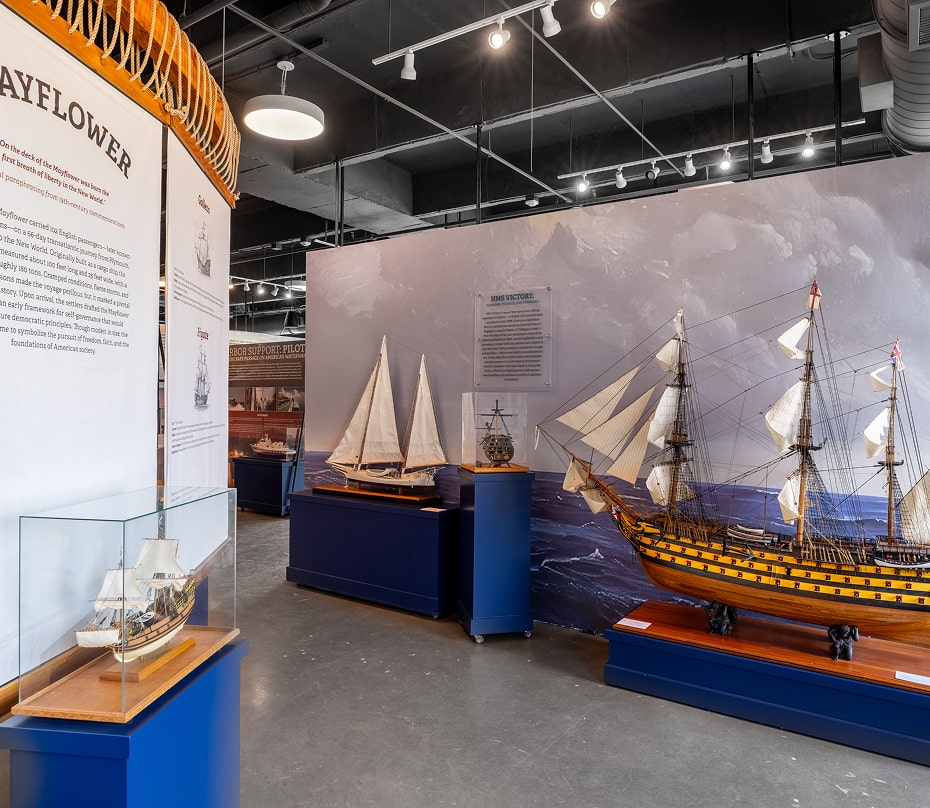
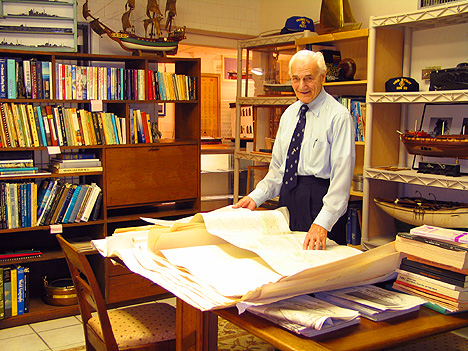
About Our Founder
James “Jim” L. Manzolillo’s life was defined by a deep love for the sea and a spirit of innovation. Growing up near Pennsylvania’s Schuylkill River, he carved his first boat at age six and never looked back. After earning degrees in naval architecture, marine engineering, and mechanical engineering, Jim served with the Merchant Marines in World War II and traveled the globe for Caterpillar, developing marine applications for their engines. In 1959, he launched his own shipbuilding company in Mexico, where he designed and delivered vessels around the world—including the first commercial boat with a copper-nickel hull to reduce drag and fuel use.
His travels sparked a passion for collecting nautical artifacts and sharing maritime history with others. That passion became the Houston Maritime Center & Museum, a place where Jim’s vision of connecting people of all ages to the history, technology, and adventure of the sea continues to thrive. His legacy lives on through the museum’s mission to inspire curiosity and appreciation for the maritime world.
